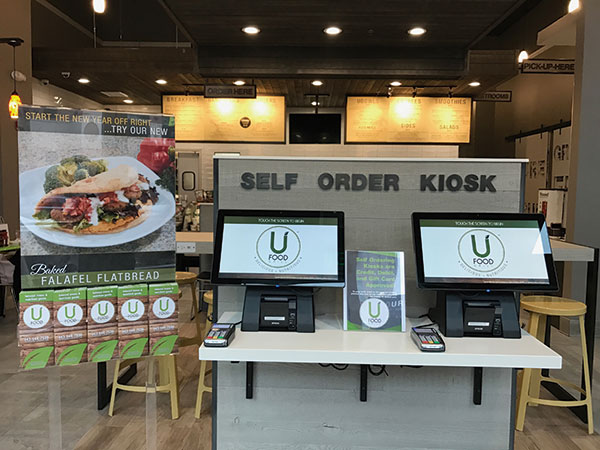Some would argue that restaurants have been behind the curve on tech. I’m inclined to agree. Why should a high-touch hospitality industry be overly concerned with creating fewer interpersonal touchpoints?
My favorite case study in the perennially popular business book “From Good to Great” by James C. Collins is about Walgreens. The lesson is that organizations have to know what they’re good at and not lose focus on their core business. In Walgreens’ case, the lesson was not to chase technology for technology’s sake but to utilize technology where it enhances the business’ value proposition. Technology should serve the business and its customers.
It’s a lesson that applies to the restaurant industry.
Early this spring, UFood Grill’s new Owings Mills, Md., location opened with a self-ordering kiosk equipped with facial-recognition technology. In June, Panera Bread Company announced that digital sales — those made via mobile, web or in-store kiosks — topped $1 billion during the past 12 months and could double in 2019. The chain says it receives 1.2 million digital orders each week.
Starbucks’ mobile ordering program has reportedly worked too well — it’s getting harder for baristas to keep up, and the chain has taken hits in the business press for not having the infrastructure in place to keep up with demand.
Emerging and leading chain brands quickly learn that specific technology applications can serve their customers and grow their businesses. But it appears chains without the proper vertical integration could suffer growing pains while trying to harness their tech.
I was talking to a manufacturer of drive-thru and digital displays at the National Restaurant Show in May, and I asked him who was coming to specify his products because I truly wasn’t sure. With the rise of integrated technology in restaurants, I couldn’t discern if designers were utilizing his products as design elements (as his display implied), if the IT folks were specifying his boards for technological integration in the front and the back of the house, or if it was a desire of the marketing department to use the boards to promote seasonal and other limited-time offerings in existing stores.
The manufacturer shook his head and laughed and said that he’s happy to take an order from any of the above. But, he went on to explain, that very day, all three teams had come and asked him questions independently of each other even though each team was from the same restaurant chain. He got the impression the teams had no idea they were each coming to see him.
As tech becomes a bigger part of a restaurant’s operating platform, it might be time to step back and look at the bigger pictures of who controls it and why.

